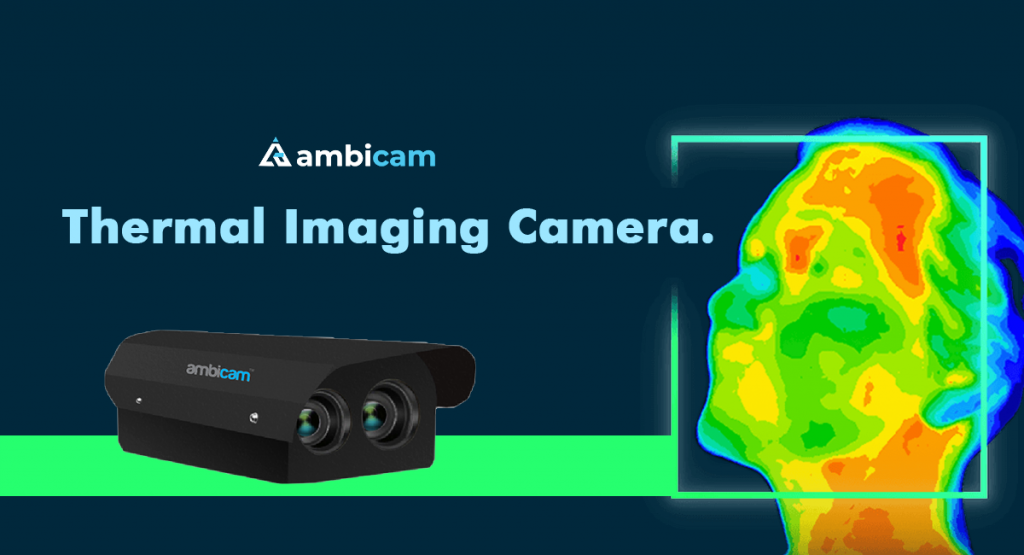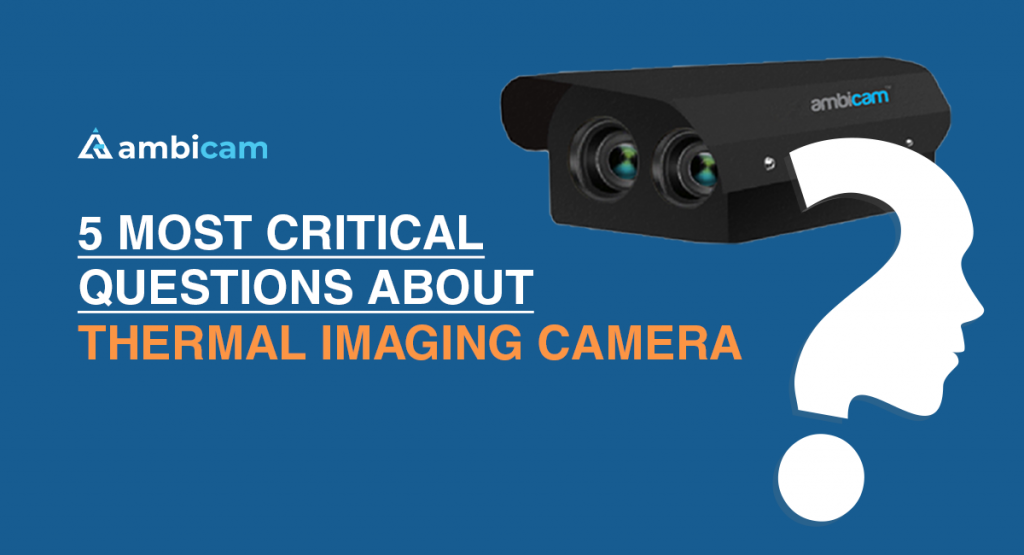The ubiquitous ascendancy of digital technologies, smart devices, and remote techniques is visible across industries and even in personal lives during the recent time of the pandemic. And how swiftly businesses, governments, and security agencies have readjusted their working modules to align with the new normal norms, is simply commendable. While there is an array of smart products in the market, thermal imaging camera are one of the most talked-about products currently.

Thermal imaging cameras are multi-purposed remote screening solutions to:
- Protect humans, surfaces, and the environment from invisible viruses
- Ensure adherence to COVID-19 safety norms like social distancing, mask detection
- Conduct rescue operations on large scale by getting deployed on drones
- Detect fire, hot spots, and sources that could potentially lead to ignition
- Monitor forest environment, track animals, to detect warm-blooded animals while photography, filming, research, etc.
- Identify collision-prone conditions for marine forces and sailors while sailing under extreme weather conditions or in dark
The differentiating factors of thermal imaging camera
Thermal imaging cameras are amongst the most powerful remote-sensing devices with the potential to accurately detect body and surface temperature. Advanced thermal imaging cameras powered with smart AI analytics collect image and video data at light speed on a real-time basis. These cameras can precisely derive temperature results from multiple surfaces such as land, water, and air.
Unlike visible imaging devices, thermal radiations can better penetrate dust, fog, smoke, etc. to effectively detect the abnormal temperature in human and animal bodies and surroundings. Users may find a wide assortment of thermal imaging cameras in markets worldwide. Ambicam thermal imaging cameras with cloud storage and AI-enabled intelligence is one of the most trusted devices in India and the US.
These cameras assist users in a preliminary screening of body temperature, face recognition, and mask detection whenever a person enters a shop, mall, office, hospital, or any other place. Ambicam thermal imaging camera are also equipped with audio alarms and various triggers to alert security officials on identifying a person with a high body temperature or without a mask.
For these reasons, thermal imaging cameras by Ambicam contribute significantly to controlling the spread of viruses in your personal and workspace. As the popularity of thermal imaging cameras is increasing, owners and potential users get curious to dig deep about this technique and its functions. We have compiled a set of:
5 most critical questions about thermal imaging camera that should be answered for everyone who looks forward to using this device.

1. Does a thermal imaging camera diagnose COVID-19 infected people?
It would be misleading to claim that a thermal imaging camera can detect an infected person. So no, it does not diagnose a COVID-19 patient around you or your property. These cameras are widely used in public spaces, terminals, hospitals, shops, schools, and banks to identify people with elevated body temperature. Because fever is the most common symptom of COVID-19 or for other nature of flues in general, therefore, restricting entry to a person with abnormal temperature is a good preventive measure.
2. What should be the distance between a camera and the target for accurate reading of body temperature?
The target should stand within the temperature detection range of the camera. For example, Ambicam thermal cameras can read body temperature precisely from a distance of 0.5 m. However, the location of the camera matters a lot. If a thermal imaging camera cannot be installed within proximity to the visitors, a telescopic camera lens can be used to measure reliable temperature reading.
Alongside, several settings and functions need to be adjusted to receive the best imaging results. These are mentioned below:
- Modify the thermal camera focus
- Choose automatic or manual settings of infrared image
- Choose a preferable range of temperature
- Choose a preferable colour palette
- Modify the temperature reading parameters
- Complete NUC (Non-uniformity correction)
3. Is it true that nothing can hide from a thermal screening camera?
If you camouflage with mud and leaves to hunt down prey, unfortunately, you would be caught by the security authorities of the forest department if they are using a thermal imaging camera. The concept is that these cameras don’t depend on visible lights to record video and images and rather leverage thermal energy to create what it shows. No light or weather condition can hinder thermal imaging that is why police and security agencies are quickly embracing thermal screening cameras to optimize their operations and vigilance. A thermal screening camera can read your body heat even when you are hidden behind a tree or in a foggy environment, and hence, it is almost impossible to hide from thermal screening.
4. Why do thermal cameras record better images at night?
Thermal imaging cameras deliver better images and video results at night and it is primarily because of lower environmental temperature. Light conditions do not have any impact on the results of thermal images. Another notable aspect is that other components of an ecosystem are generally colder at night due to the absence of sunlight, therefore, thermal screening cameras detect hot areas and surfaces more clearly. Warm objects are displayed in sharper contrast on thermal images during night hours, offering a better view to the responders to make effective decisions.
5. Does a thermal image camera detect object heat on the other side of a wall?
No, a thermal imaging camera cannot see through a wall or any concrete surface and hence it cannot measure the object temperature that is placed on the other side of a wall. These Screening cameras can only read the body temperature of an object, human, or surface that lies in the sight of their lens. The logic behind it is that a thermal screening camera reads the heat emitted outwards by an object or surface that cannot be recorded through a shield between the target and the camera.
And, since buildings are deliberately constructed and insulated to trap heat, the walls do not reveal any information that resides inside them. Have got some more queries regarding a thermal screening camera, reach out to the Ambicam experts and find logical and reliable answers.
